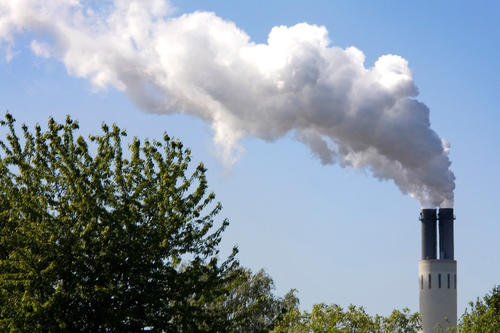Working toward Clean Air in Berlin
At the Institute of Meteorology, a guest researcher from Iran is helping to develop models to better understand the distribution of air pollution in Berlin.
Aug 26, 2013
More measuring stations are needed in order to be better able to predict the quality of the air in the city.
Image Credit: Jorge Royan
They measure sulfur dioxide and nitrogen oxide, carbon monoxide, ozone, benzene, and particulate matter. Some of the things they record are odorless, while others have a distinctive unpleasant smell – and yet, the Berlin Senate Department for Urban Development and the Environment has given its air quality measurement network an evocative name: BLUME, German for “flower.”
Station locations include Karl-Marx-Straße, Frankfurter Allee, and Müggelsee. Every five minutes, 24 hours a day, the 16 stationary measuring instruments transmit air pollution figures to the network’s headquarters, located on Brückenstraße, in the Mitte district. The Senate Department also uses 30 mobile meters to collect data. Still, when it comes to arriving at an accurate forecast, these measurements are not enough.
Guest researcher and environmental management specialist Hamid Taheri Shahrainyni, of Shahrood University, in Iran, has refined a statistical method that makes it possible to calculate probabilities even if there are gaps in the available data. Shahrainyni, a recipient of a Georg Forster fellowship from the Alexander von Humboldt Foundation, is to work at the Institute of Meteorology at Freie Universität Berlin over the next few months, helping to calculate better models for the spread of air pollution in Berlin.
The institute’s Meteorological Information and Communication Systems (MIKS) working group does receive measurement data on an ongoing basis, but neither the data supplied by the German Weather Service (DWD) nor the information that comes from the BLUME measurement network operated by the Senate Department and the institute’s own eight measuring stations within the city is sufficient to allow for accurate predictions of pollution levels in specific areas of the city.
“At the same time, levels of particulate matter and nitrogen compounds in Berlin are still too often above the limits set by the European Union,” says Professor Sahar Sodoudi, who is in charge of the Urban Climate working group at the institute. “The possible health effects include asthma, lung disease, and heart attacks. That’s why it is important to understand how air pollution is distributed at the urban microclimate level, and where the possible solutions lie.”
The guest researcher’s idea is as simple as it is ingenious: 80 virtual stations are to be added to the measurement system. To do this, a mobile measurement bus will drive to 80 observation points throughout the city – in different weather conditions, in the winter and during summer heat waves. The data collected in the process will then be fed into Shahrainyni’s computer model, along with the data from the 16 permanent measuring stations. Now it is possible to calculate – even without the measurement bus – how high the levels are in the air at the 80 stations, since the system can use probability to calculate how the values at the virtual stations change in relation to the stationary ones. The measurement bus now only has to be deployed from time to time to check real-world conditions against the values calculated for the virtual stations and calibrate those values.
“We hope to better understand physical and geographic connections and arrive at better predictions of how pollution is distributed in our city under different weather conditions,” Professor Sodoudi says. That would bring tremendous relief in terms of urban planning, since these kinds of forecasts are the only way to decide where roads are a good idea, and where green space is needed.
The Iranian researcher tested his method in Tehran. Although climate conditions there are not very similar to those in Berlin, it was still clear nonetheless that Shahrainyni’s model can be used to calculate reliable data. The method is now to be applied to far-off Berlin as well.
The meteorologists already know, for example, that a dome of heat forms above the city at 3 a.m. on hot summer nights, preventing particulate matter and soot from rising into the upper layers of the air. These pollutants accumulate near the surface, affecting the air we breathe. These kinds of inversion conditions can also form in the wintertime, when warmer air masses in the upper layers of the troposphere move over the colder air close to the ground. “These two sets of conditions are extreme when it comes to pollution,” the professor says, “but they can teach us a lot about the Berlin microclimate.”
Further Information
Homepage: www.geo.fu-berlin.de/en/met

